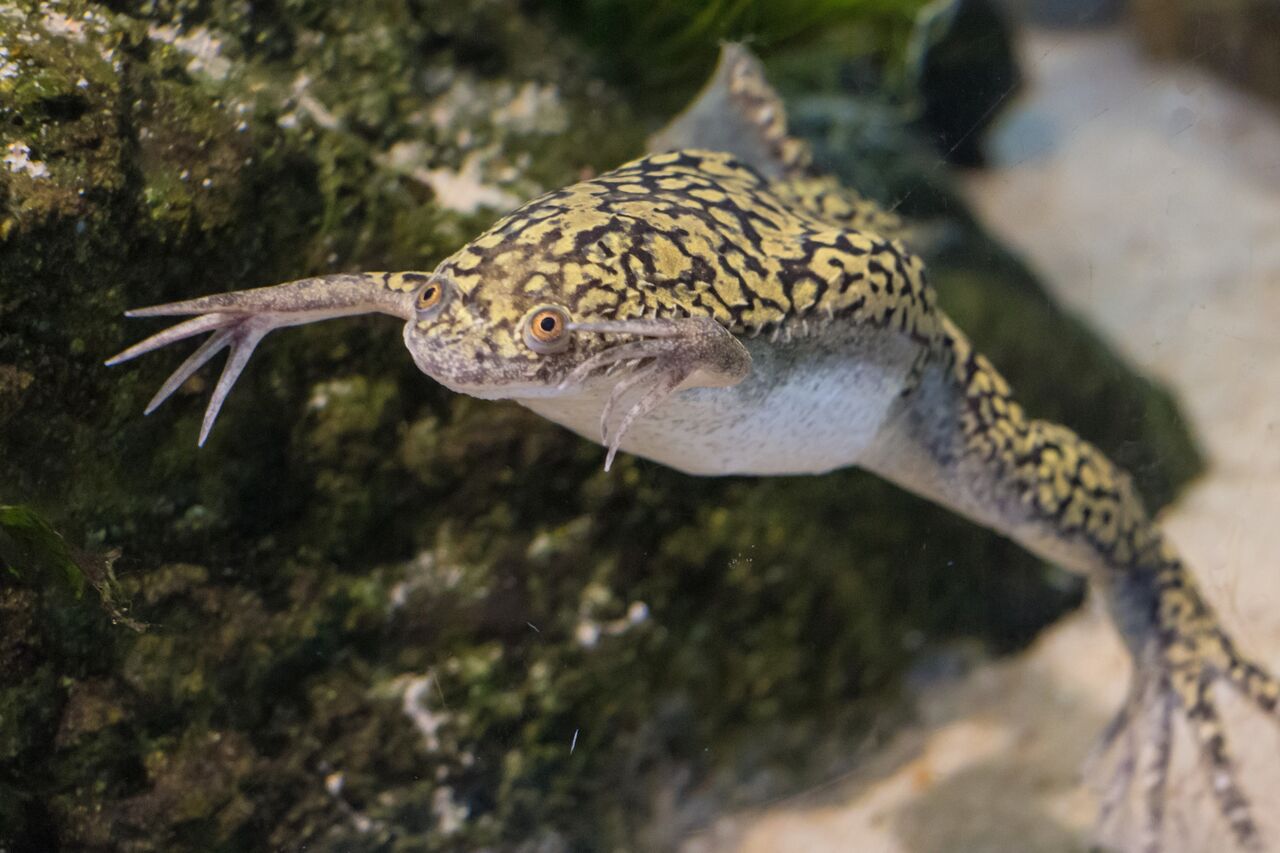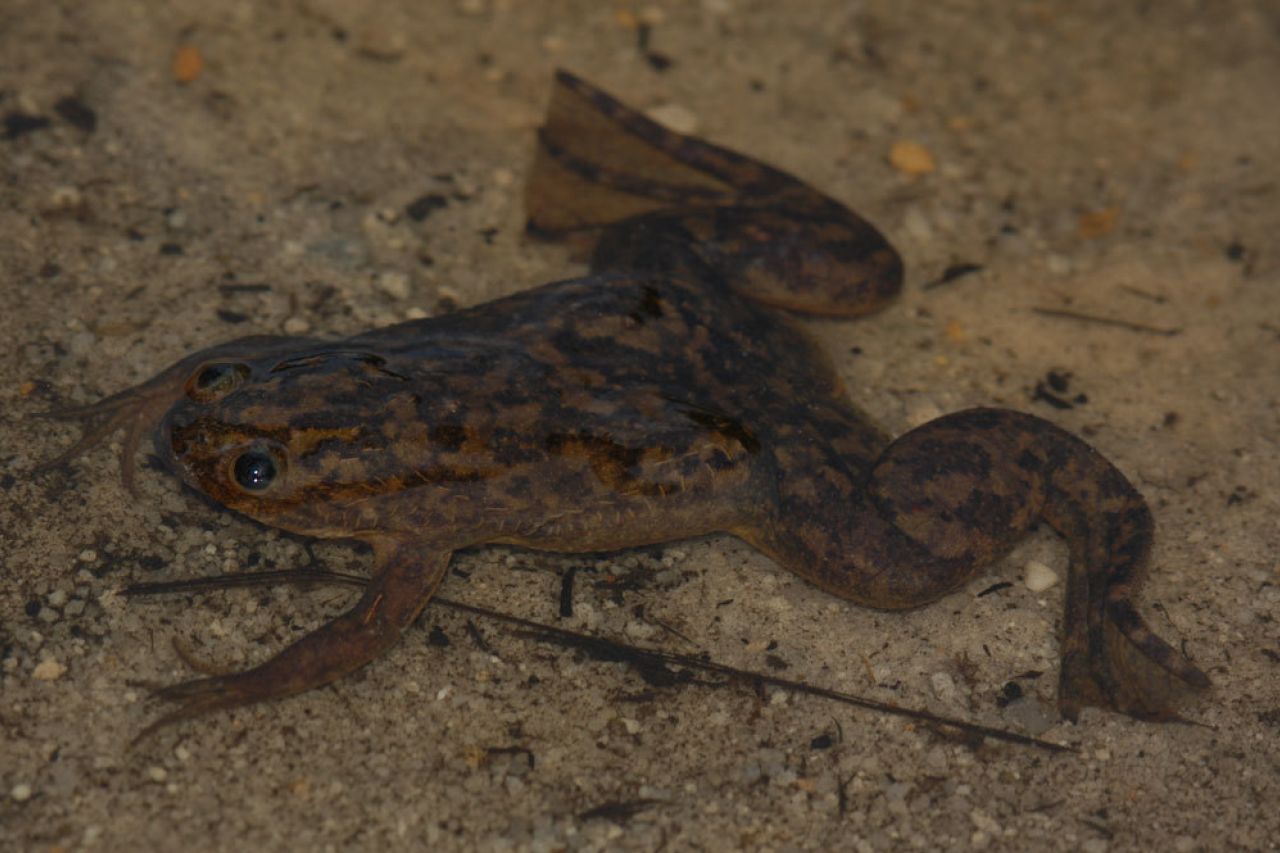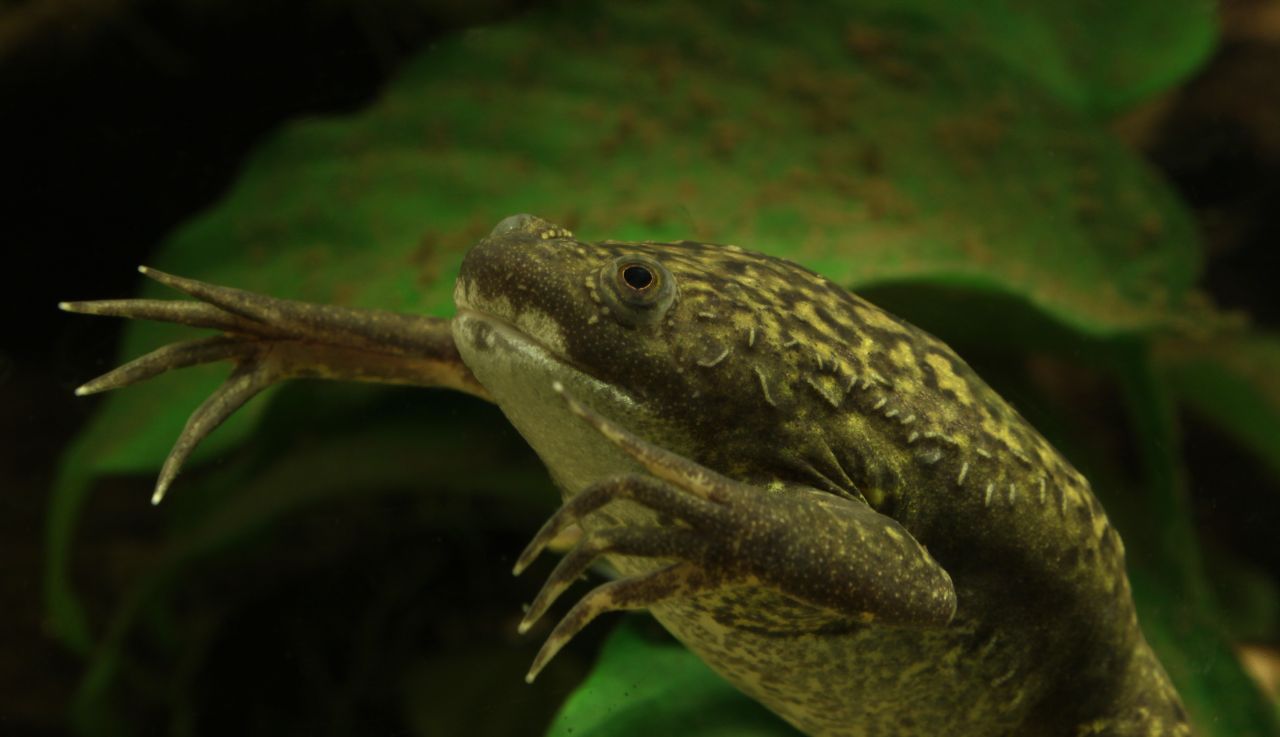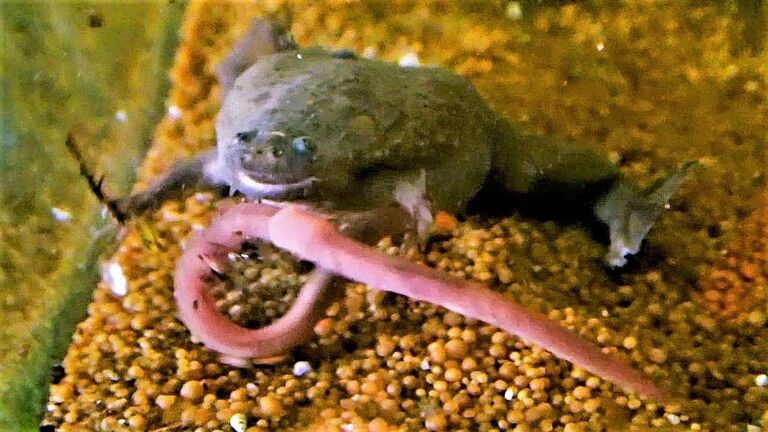When Two Oceans Aquarium visitors see our common platannas performing their rendition of the "Mannequin Challenge" opposite the African penguins, they don’t realise that these usually-still amphibians are incredible examples of survival in action. Let’s take a closer look at Africa’s “clawed frogs” and see what makes them so special.
What’s in a name?
Most of the names for the common platanna reference its admittedly weird hands. Its scientific name is Xenopus laevis, which roughly translates from Greek to “smooth strange-foot”.
“Platanna”, the most commonly used name in South Africa, is Afrikaans and comes from the old Middle Dutch “plat-hander” – meaning “flat-handed”. Internationally, it also carries the name African clawed frog or claw-toed frog, again emphasising its unique feet (more about their toes below).

Where do they live?
Platannas are found throughout the swamps, wetlands, ponds, lakes, and slow-flowing rivers of Sub-Saharan Africa. Because they are so adaptable, platannas that have escaped as pets or laboratory animals have been inadvertently introduced to other parts of the world as an invasive species, including North America, the UK and China.
These frogs are almost completely aquatic and only ever leave the water if forced by drought or other significant disturbances. In cases of drought, they will bury themselves in mud and wait for up to a year for rains to return. But, they can also use their powerful hind legs to cover large distances on land quickly and have been known to travel over 2km to find alternative bodies of water to live in.

No tongue. No teeth. No problem.
Platannas aren’t your stereotypical frog. They don’t have tongues to catch insects, nor do they have teeth to enjoy any particularly specialised diet. Instead, these carnivores rely on their hands, feet, and enormous mouths to feed!
Platannas are not fussy, they will prey on small fish, tadpoles, crustaceans, insects, worms, and any carrion they find – they will even eat their smaller neighbouring platannas! When they spot prey, they lie motionless, and when their prey gets too close, they will quickly use their front hands to grab food and shovel it into their open mouths.
Platannas’ back legs aren’t just for swimming – the three last toes on each foot have sharp claws that are used to rip up large prey or pieces of food into smaller, bite-sized pieces.
The video below shows a different species of Xenopus, but demonstrates beautifully how these frogs use both their front and rear legs to feed:
Platannas have terrible eyesight. Unlike most frogs, which use their eyes to find prey, platannas rely on their sense of smell and specialised organs (lateral lines) to detect vibrations and pressure changes. Some Aquarium fans might remember that lateral lines are an organ that fish have too.
As tadpoles, platannas are filter feeders that consume microscopic plankton and algae. Because microscopic organisms are the first part of the ecosystems that recover after droughts, platanna tadpoles can feed in waters where adults can’t… which means the tadpoles can serve as a food source for the adults until larger prey appears.
The frog princes of adaptability
As you may have already figured out from their ability to avoid droughts and survive on a wide variety of foods, platannas are highly adaptable – and their reproductive cycle is no different.
Platannas have no specific breeding season. Conditions are usually ideal for breeding after a wet period. When they can safely emerge from their burrows or their waters have been reinvigorated by fresh nutrients, both male and female platannas will make their mating calls and try to find each other while moving from pool to pool to find food.
While this strategy serves platannas well when water is scarce, they are also surprisingly social when they find themselves in wet environments and ponds. Male platannas are smaller than females and will form a hierarchy based on their mating calls, with only specific males gaining "vocal dominance" and being allowed to call for a mate. This form of dominance amounts to a singing competition, with the male who sings first, loudest, and longest maintaining dominance!
Female platannas are significantly larger than males and will call for a mate at night whenever they are "gravid" - bearing eggs. During her lifetime, a female platanna can lay as many as 30 000 eggs, each living for up to 15 years... or they might end up as tadpole snacks to help her survive a harsh season!
Platannas truly are remarkable survivors, be sure to visit them this Frog Week at the Two Oceans Aquarium.
Related News
Sign up to our Newsletter
Receive monthly news, online courses and conservation programmes.





